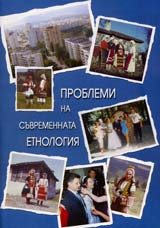
We kindly inform you that, as long as the subject affiliation of our 300.000+ articles is in progress, you might get unsufficient or no results on your third level or second level search. In this case, please broaden your search criteria.

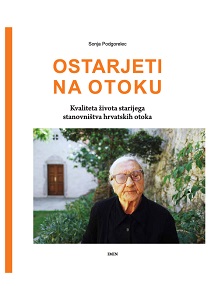
The ageing of the populations of Croatian island is the result of the process that marked island life during the past century – emigration. Permanent outflow from the islands of mainly younger people of working age had a gradual effect on the total reduction of population, and also on natural demographic trends, causing a fall in the birth-rate and relative growth of the death rate. The result of such natural and mechanical trends was the ageing of the island population reinforced by the return of islanders after retirement to their island. The specificity of island life, the age and gender structure of the population as well as the self-reliance of frequently small populations, have determined the roles of individual groups and have forced the inhabitants of the Croatian islands to lead active lives into advanced old age. The author argues for a broader conception of understanding the activities of elderly members of island communities and provides an answer to the questions of the ways of island life and the role of migration, evaluates the problems of island community and ways of solving them, and talks about the place of elderly people in revival programmes for the islands and the quality of their life at the beginning of the 3rd millennium. In this connection a quantitative analysis of census data and data from various other institutions were used, while in the field survey the questionnaire method was applied as well as the biographic method or the method of deep interviews. The questionnaire survey was conducted on a sample of the populations of Ugljan, Iž and Dugi Otok. Likewise we tried to give a broader and more individual picture of the quality of life of the elderly island people through ten life stories of old islanders, the majority of whom were inhabitants of the Kvarner islands: Krk, Cres and Lošinj.
More...
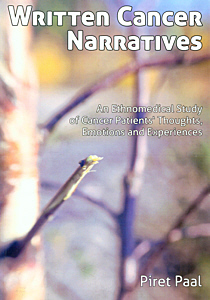
Above all, this work is about patients and their points of view. It concentrates on patients’ ‘voicings’, which are important in order to make the cancer experience understandable and ‘open’ in the current cultural and societal setting. When following this thesis one should bear in mind that it is the work of a folklorist who is specialised in illness narratives and traditional traits occurring in narrative representations. Particularly in the written narratives, the natural world and the glimpses of tradition become bound together with one general aim – to tackle the illness and mediate its meanings.
More...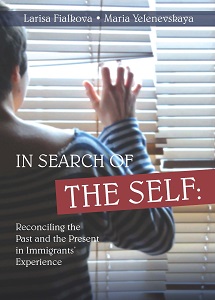
This book is a follow-up to our project devoted to personal narratives of ex-Soviets in Israel. Our original plan was to collect previously published articles dealing with immigration issues but differing from the main themes of our book Ex-Soviets in Israel: From Personal Narratives to a Group Portrait (Fialkova & Yelenevskaya 2007). The themes of immigrants in the city, attitude to law, immigrants’ literature and humor were touched upon but not developed in depth in that volume.They were researched in a number of papers written later (Fialkova &Yelenevskaya 2006, 2006a, 2011, 2012, Yelenevskaya & Fialkova 2006,2008) and discussed in our presentations at 11 scholarly conferences.However, when we re-read the articles we realized that the situation in the Russian-speaking community was so dynamic that studies conducted three-five years ago should be seriously revised and updated.
More...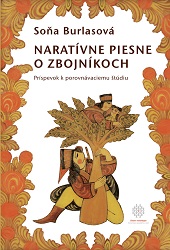
Slovak researchers have paid close attention to robber songs as a significant genre of Slovak folklore. The texts and melodies of robber songs are widely documented in numerous song collections, usually without any specific thematic classification. For example, Ján Kollár lists in Spievanky several robber songs in the section on Ballads, Romances and Fairy Tales. In his collection of ballads, K. Medvecký devoted specific sections to robber songs under the titles “Robber Songs” and “Gallows Songs” (pp. 109–122, 123–129). Horák’s selection of works of poetry, published in the same period, contains ten robber songs in volume I, section V. (The first song in this section, however, is not a robber song, which is explained in the comment). The big collector of Slovak folk songs K. Plicka focused mainly on lyrical robber songs. In his contribution, he provides examples of his own records and also presents his opinions on the melodies of robber songs. Historian J. Vilikovský5 examined the manuscript of the popular songs “O Surovec Jakubovi, zbojníkovi” (“AboutJakub Surovec, robber”), “Píseň o Jánošíkovi zbojníkovi” (“Song about Jánošík, robber”) and “Píseň o Adamovi a Ilčíkovi, zbojníkoch” (“Song about Adam and Ilčík, robbers”) which were disseminated by copying. The manuscript seems to date back to 1780. Even though these songs are artificial, there are clear relations in terms of texts and motifs between some of them (in particular the song about Jánošík) and folk tradition. Melicherčík’s book Jánošíkovská tradícia na Slovensku (Jánošík Tradition in Slovakia) should be considered a fundamental work about Slovak folklore with robber themes, just like a wide range of his studies published in journals. In these works, Melicherčík supported the perception of robber folklore as a documentation of people’s heroic, progressive and anti-feudal attitudes. This concept was later supported by V. Gašparíková who studied Michael Vdovec, a robber of regional (not national) importance, a typical representative of the robbery epilogue in Slovakia.
More...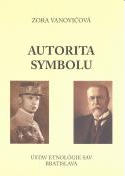
The formation of symbols is a characteristic feature of human thought; symbols become part of the inherited cultural equipment to not only identify common groups and individual values, ideas and ideals, but also to somehow stabilize and update them. Out of many outstanding personalities influencing the joint state of Czechs and Slovaks, the oral tradition selected some, on the basis of specific criteria of folklore traditions, which were also affected by their official presentation. The field investigation of the collective narratives shows that the main criteria for their selection were folk character of the personality, its moral credit and its status of victim. In 1989, after the fall of communist regime, one could again freely and openly talk, reminisce, investigate and publish topics associated with personalities that were tabooed and doubted for more than forty years. Folklore studies in Slovakia turned its attention to the older folklore material collected in the period of ideological relaxation in the years 1967 - 1969 and complete it with further actual research. The exploration of this topic brought to folklore studies opportunities to address some methodological problems. In the past, the research of oral tradition was concentrated mainly on particular personalities and characters from the distant past which were transformed by tradition into a legend with only few realistic elements (for instance national and folk hero Jánošík). The research of folklore reflection of the 20th century personalities has provided the challenge to track the creation of collective symbols and identities and the change of their perception during the time. The real historical personalities of modern political and social life of the 20th century, reflected in ideas of diverse groups of rural and urban populations, connect the historical experience with myths, cult, local folklore as well as the positive and negative influences of contemporary interpretations of history. The national and religious antipathy and affinity are also interconnected within the region or locality. These are connected to several historical periods and facts: the First World War, the struggle of our nation for the own state, the relationship between the nations in the early days of the state and in its further development, then the Slovak state, the World War II, partisan movement during the Slovak National Uprising, the communist regime, the occupation by Soviet troops, the normalization, and finally the post-communist period and the dissolution of Czecho-Slovakia. The author in the individual chapters addresses a picture of prominent historical figures connected with the formation and existence of the Czechoslovak Republic: Milan Rastislav Štefánik, the first president Tomáš Garrigue Masaryk (1850 - 1937) and his son Jan Masaryk, foreign minister in the Czechoslovak government after World War II in oral prosaic tradition. Based on the research material obtained in Brezová pod Bradlom, Košariská and its vicinity, the author in the study The image of a hero in Slovak prosaic folklore (“Obraz hrdinu v slovenskom prozaickom folklore”) states that folk narratives of general M.R. Štefánik’s personality is necessary to interpret within its complicated historical and political context, including also the periods before and after M.R. Štefánik’s life. Folk narratives are constantly maintaining the continuity of his image, pointing out his importance for the present and future and his spiritual potential for the national community. The range of official and folk manifestations about him varies from romantic and pathetically emotional perception through real-factual (often unilaterally positively celebratory) to negativistic political discrediting. This is one significant sign of M. R. Štefánik’s myth, which shows its exceptionality in Slovak folklore. The part The elements of bios in the contemporary Slovak folklore (“Prvky biosu v súčasnom slovenskom folklore”) is based on the scheme of basic and classical bios of the biblical story of Christ’s life, the life of a Byzantine saint, one of the oldest and most popular genres of Byzantine literature, which as a prototype of canon biography (T.V. Popovová also analyses the oldest biographies preserved in Slovakia − ‘The life of Constantine (Cyril)’ and ‘The life of Method’. The genre of bios is further developed in three ways: 1) to remember the stories of important people, 2) the celebration of a hero, 3) the moralistic and psychological role. The study of a folklore cycle about M. R. Štefánik with elements of bios, shows that it incorporates more real and specific issues from historical period and the events concerned, the closer the topic gets to the present (as well as stories from life), but at the same time keeps the classic elements of folklore genres and themes in the tradition. The part titled The theme of death as a myth-creating element in the folklore cycle about M. R. Štefánik (“Motív smrti ako mýtotvorný prvok vo folklórnom cykle o M. R. Štefánikovi”) suggests that the mysterious circumstances surrounding death in general encourage curiosity, conjecture and conditions for spreading different possibilities for its explanations. The political myth-creating process that becomes folklore, of which the Štefánik’s folklore cycle undoubtedly is a part, includes not only the various political illusions, substantiating political attitudes, but also the archetype fate of how M. R. Štefánik was violently and mysteriously killed in a plane crash on 4th May, 1919 at Vajnory (there were reported at least six different explanations of his death). Finally the author pays attention to the process of interpreting his life within the folk tradition and the national idea, which embodies the hero, and his transmission to immortality. The part M.R. Štefánik in the oral tradition in Slovakia (“M. R. Štefánik v ústnej tradícii na Slovensku”) suggests that images of different folk heroic types are developed through the whole cycle of episodes about their character, activities, life and relationship to the neighbourhood. Thus the concrete personality is taken as a model characterising a particular locality or region, and under certain circumstances can grow into a national hero. The reflection of the personality of M. R. Štefánik in the oral tradition, points to differences in the perspectives of several generations, not only with the concern of turning him into a myth, but also in connection to the different historical experiences of the generations and impact of different political regimes. On the one hand, there are still memories of direct eyewitnesses, contemporaries and peers of M. R. Štefánik, on the other, the narrative of subsequent generations are more affected by journalism, official evaluation, reaction to the often contradictory information and experiences, and then also the reactions of the youngest generation, ideas and knowledge of children. The folk hero across national border (“T. G. Masaryk in Slovakia I.”) is devoted to folklore cycles of important personalities of the common history of Slovaks and Czechs. There is a folklore cycle concerning the life of the first Czechoslovak president T. G. Masaryk and his family at the both sides of the mutual border. In Slovakia, especially in his holiday destination in Topoľčianky (where he used to spend the summer at the castle with his family, welcoming the visits of friends, politicians, artists and eminent personalities from abroad), and also in Bystrička near Martin. These regular summer visits with his family date back to 1887, when he was still a professor at the University of Prague. After he was elected President, he spent several summers in Bystrička in a villa that was built by his daughter Alica in 1931. Here the folklore topics are devoted to their villa in Bystrička that they called ‘manor house’, relationship of the president and his children Alica and Jan to the people of Bystrička and Martin, the fate of Bystrička’s ‘manor house’ confiscated in 1952 (which includes the current, contemporary relations to the Masaryk tradition), the image of the SlovakCzech relations at the local level and the confrontation of the two presidents, T. G. Masaryk and Václav Havel, and their relationship to Slovakia. The comparative probe into the folk repertoire with the topic of T.G. Masaryk’s personality in the territory of the Czech Republic (municipality Nedašov, Nedašovská Lhota district Valašské Klobouky) on the Slovak-Moravian border highlighted some common features, but also differences to the Slovak view. The part Genius loci – genius personae: Topoľčianky. T. G. Masaryk in Slovakia II. (“Genius loci – genius personae: Topoľčianky. T. G. Masaryk na Slovensku II.”) points to the village Topoľčianky, still known for its historical role in the first half of the 20th century, when, regularly, for several months a year it used to be not only the resting place of the president T. G. Masaryk, his family and government officials and other important domestic and foreign guests, but also a center of management of the Czechoslovak state. It was one of the few sites where, at the time, political and diplomatic influence was concentrated, where the elements of the myth-creating image of the first president were formed, from where stories about the President’s relationship to the ordinary people and his cult were spread by printed media. It was also a place where artistic photos of his private life and Čapek’s book of conversations with him originated. For the village it was a period when it became known as the “Masaryk’s Topoľčianky” and carried the torch of good relations between Czechs and Slovaks and a flag of a joined state in favourable or unfavourable conditions of its political perception. The image of Jan Masaryk in oral tradition (“Obraz Jana Masaryka v ústnom podaní”), by selecting certain motifs of his life mainly consists of three layers, which correspond to certain episodes of bios mode (his life): childhood, youth, relationships with people, character traits, wisdom, death and his legacy into the future. They are intertwined with the published facts, with the memories of individuals and their ancestors, as well as various rumoured news disseminated to clarify the unexplained circumstances of his death. In the part titled The 90th anniversary of the death of General Milan Rastislav Štefánik (“K 90. výročiu smrti generála Milana Rastislava Štefánika”) the author recalls the celebration of this anniversary in Slovakia organised by ‘The association of Czechs and Slovaks’ in Basel (DOMOV, “HOME”) and the Swiss branch of the Society of Arts Sciences (SVU) on the grounds of the Slavonic seminary at University of Basel in June 2009. Here, the results of folkloristic research concerning the personality of M.R. Štefánik were presented. The relationship to the symbols in some way reflects the history of a nation or state and facilitates the continuity of the present with the past pointing at the same time to the future. These values and symbols have a strong authority even today, which confronts the disintegration of values and moral crisis in society, as well as the search for common pathways in the European history of two nations, the Czechs and the Slovaks.
More...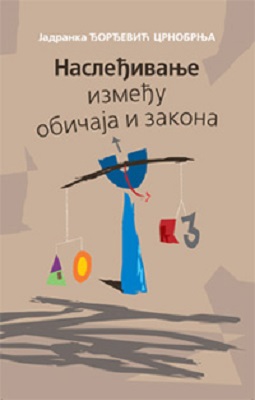
Inheritance relation and institution of inheritance are the main subjects of this book. Inheritance is a process regulating the transfer of property by the deceased among his/hers inheritors. The transfer of property, assets, as well as certain rights and obligations from the deceased to inheritors settles in probate proceedings. Since 1955, inheritance in Serbia can be two fold: legal and testamentary. The Serbian legislature does not recognize other inheritances, such as inheritance contract. Therefore, an inheritance is possible only when a person dies, or when a person is declared dead. Legal inheritance presumes the deceased is inherited by his/hers legal inheritors, divided into inheritance levels according to kinship relatedness and kinship lineage with the deceased. Furthermore, inheritors of the closer inheritance levels exclude from the inheritance inheritors of the further inheritance level, hence the principle of exclusion is applied. The first inheritance level includes the deceased biological and adopted offspring, as well as conjugal partners. Persons related by blood with the deceased, that is, related by birth, have an equal right to inheritance as persons related by civil kinship, that is, related by adoption with the deceased. Gender equality of all offspring is one of the main legal rules of inheritance established by the socialist legislature in Serbia. Legal inheritance also assumes the rule according to which all inheritors of the same level have an equal right to inheritance. An exception to this rule is a spouse, for he/she, within legal inheritance, is entitled to one half of the deceased assets. That is, this inheritance portion is larger than inheritance portions of the deceased’s offspring, or all other inheritors. Testamentary inheritance, in contrast to legal, grants a person to dispose his/her property at own discretion. At the same time, the Law on Inheritance regulates that a testament cannot be open or property divided until the death of the Testator. In this way, compliance is attained between rules about testamentary inheritance and general rules of inheritance, as defined in the Law of Inheritance. Despite this regulation, practice often witnesses deviations from certain legal normative. Disagreement of theory and practice is not a sole characteristic of inheritance but also of other spheres in civil law. The institution of inheritance and inheritance practice do differ, however, from other law spheres in explicit parallel application of legal and customary normative. This parallel practice is in application throughout Serbia for more than a century in spite that civil law and legislation do not consider customary normative as a source of law. Customary law, due to this refutation, so represents an illegitimate law system. This issue provokes a number of questions, primarily: within legal and testamentary inheritance, how it is possible to have a parallel application of legal (official) and customary normative while at the same time, the whole procedure is considered legal? The parallel application of customary and law normative is not problematic solely in this matter but also raises a concern of collision in between the two respective normative. The collision emerges as a result of essentially different, opposed principles of inheritance within the two law systems.
More...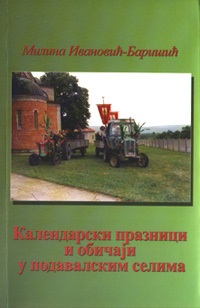
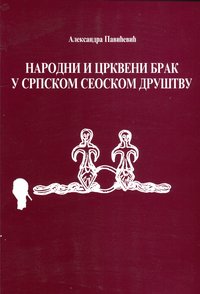
From historical fact of overlapping life of Serbian folk and its orthodox church result imperative of studding and observing institution of marriage among Serbs in the light of Christian orthodox church dogma and ideology. Short review of history of Serbian Orthodox Church points at substantial part that it had taken in different aspects of Serbian folk life what is shown through study exhibited in this work. As a basic (ideological) frame of studding the categories related to the marriage it is taken church law respectively system of norms from customary law which show high rate of mutual similarity (which origin as a result of mutual influence of those two systems), but also certain differences which are notify as a fruit of specific social, historical and cultural conditions. Methodological problems that are notify in wor, point out necessity of more thoroughly studding of so called "traditional society" model that would consider first of all, serious critic of ethnological sources and redefinition of certain ideas and concepts. As temporal frame of researched models it is taken the period of relative stability of traditional family and system of ethical norms that it represents and which ends when the process of "stormy transformation" started in the beginning of 20th century. Still, in work there are shortly presented also the elements of new age model of marriage which only purpose was to point out the direction of changes in mentioned spheres and necessity for their thoroughly research.
More...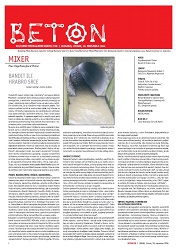
MIXER, Olga Manojlović Pintar: Bandit ili hrabro srce; CEMENT, Aleksandar Novaković: Anđeli 3, Saša Ćirić: Appendix Angelorum; ŠTRAFTA, Srđan V. Tešin: Đe si bijo kad je klalo i bombardovalo?, Vladimir Tupanjac: Politika kulturne politike; VREME SMRTI I RAZONODE, Nenad Veličković: Opinion faker, Tomislav Marković: Farenhajt 451, Miloš Živanović: DJ u Zmajevom gnezdu; BULEVAR ZVEZDA: Redakcija: Kapor Momo; BLOK BR. V., Lazar Bodroža: Zorica i Kemiš.
More...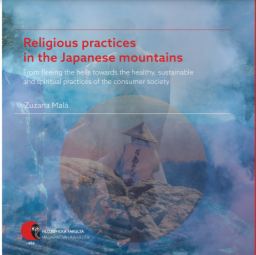
The study examines the Japanese mountains as places of religious practices. The author looks at both the historical and the present-day religious practices enacted in the mountains and asks how the logic of the market has shaped them. By looking through the historical development of religious practices in the mountainous locality of Tateyama, the first three chapters offer an understanding of the relationship between mountains and notions of the afterlife. The case of Tateyama, a popular pilgrimage site during the Edo period, provides an insight into the pilgrimage place and its mountain cult taking into account the economic aspects in the maintenance of the cult. Drawing on insights gained through field research in the Japanese mountains of Tateyama and Dewa Sanzan, the author explores the present-day re-enactments and sustenance of religious practices and their intersection with the cultural heritage concept. These observations have provided a useful perspective on adjustments between providers of religious practices and participants. Although seen as marginal practices, austerities such as taki gyō and the complexity of qualities associated with them are introduced in the last chapter as examples of the creative sustenance of present-day ascetic practices.
More...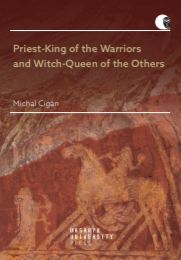
In this book an interpretation of two Indo-European mythological themes within their complex context is presented. Considered are especially historical and socio-cognitive aspects of their background. By means of this approach an innovative interpretation of an otherwise traditional mythological structure is proposed as well as a new one introduced. In the first part of the book the matter of well-known Indo-European creation myth is discussed. It is hypothetically concluded that Proto-Indo-European cultural area originated in prehistoric Cargo Cult. Certain motives and themes of Indo-European creation myth are interpreted as possible semantic relics of Pre-Proto-Indo-European Cargo Cult ideology. In the second part an attempt to present the brand new Indo-European mythological structure, so called witch-hunting myth, is made. Analysed are various local manifestations of narrative dealing with the conflict of elites with the demonic army led by a female witch. A basic sujet pattern is identified and then interpreted as an outcome of archaic Indo-European societies’ social and gender setting.
More...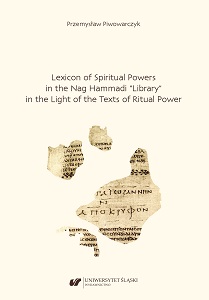
The lexicon contains a complete list of spiritual beings (“powers”) mentioned by name in Nag Hammadi and related texts. They are presented against a broad background of ritual magic texts: “magical” papyri, defixiones, lamellae, and amulets of precious and semi-precious stones. The whole is also supplemented by extracts from patristic literature. The main part of the Lexicon is preceded by an introduction, in which the fundamental originality of the demonology of the Nag Hammadi texts is demonstrated. The book is addressed primarily to researchers interested in late antique Christianity, especially Gnosticism. Specialists in late antique magic will also benefit from it, as the lexicon juxtaposes two source corpora, which are generally considered separately. It is the first comprehensive undertaking of its kind in the world literature on the subject.
More...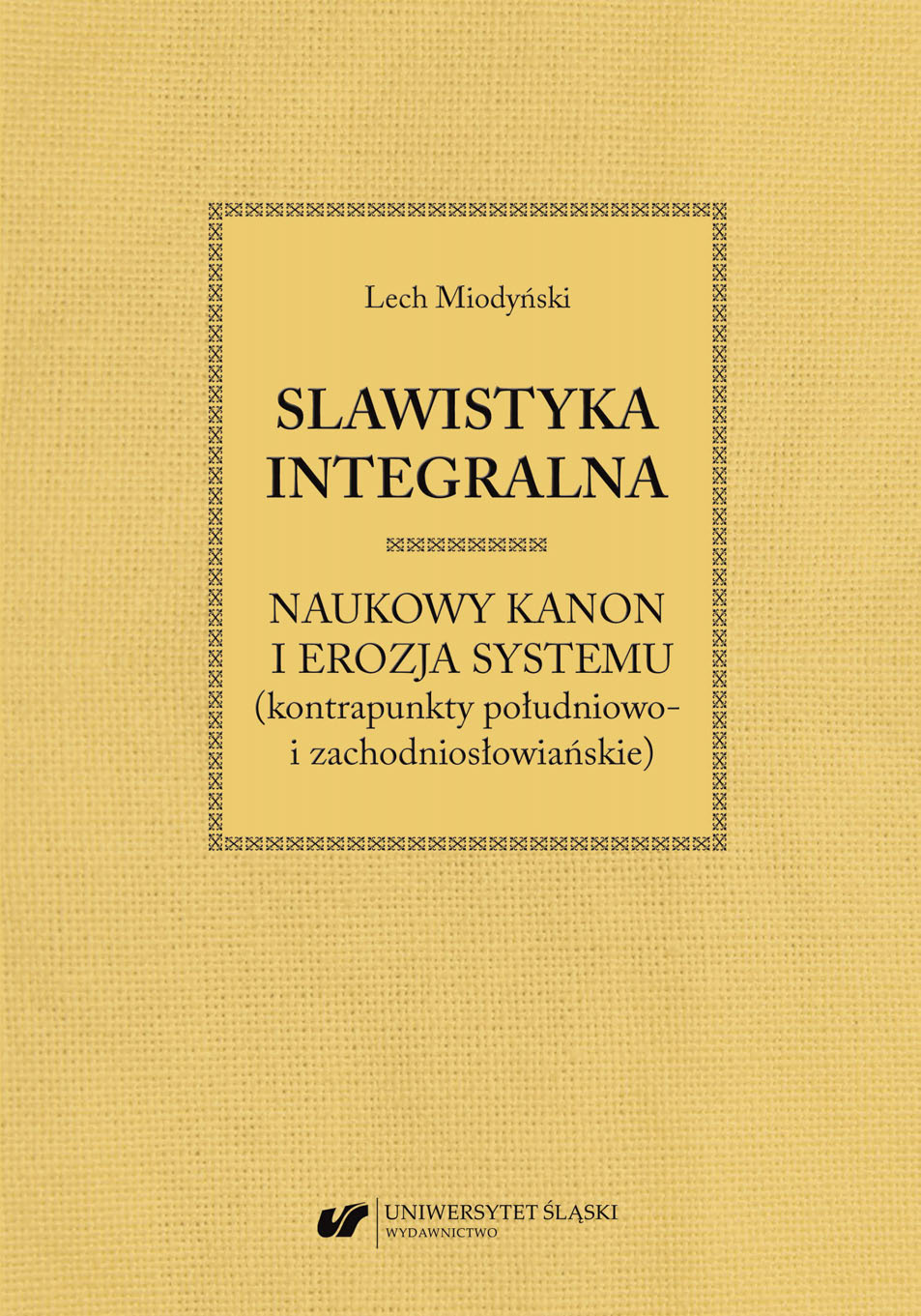
The book describes in the chronological order – with the attention focused mainly on the 19th and the beginning of the 20th century – key elements of the evolution of the European Slavic studies in the context of integrative and disintegrative processes. These tendencies are situated within the framework of diverse Slavic studies and their sociopolitical and cultural surroundings. The illustration of this issue is provided by the comparison of the extensive factography from the history of the polymorphous discipline, discussed in the methodological, socio-environmental and ethnopolitical dimensions. The oppositions “centralism – particularisms” or “collective norm – individual norm” have been designed for the ordering of rich material from all regions of Slavdom – in the perspective of creating and breaking the canon of the scholarly discoveries and the representations of the essence of Slavic studies as such.
More...
The paper deals with Russian folk tales and legends describing the cycle of birth, actions and roles of their protagonists with regard not only to their present state and condition but also to their future ones. The woman in childbirth is presented as a key character from the point of view of her role and meaning in the stages preceding the birth of a human being. The world of objects is described as a special one with regard to the reality, influencing people and being influenced by them. The author suggests a number of attitudes towards the potential, virtual typologies connected with the meanings of the paradigmatic units. The units are also discussed in terms of their internal structure and position in general semantics.
More...
The paper deals with Russian folk tales and legends describing death, dying, actions and roles of their protagonists with regard not only to their present state and condition but also to their future ones. The image of Death as a significant figure has been characterized from the point of view of its various meanings. The world of objects is described as a special one with regard to the reality, influencing people and being influenced by them. The author suggests a number of attitudes towards the potential, virtual typologies connected with the meanings of the paradigmatic units. The units are also discussed in terms of their internal structure and position in general semantics.
More...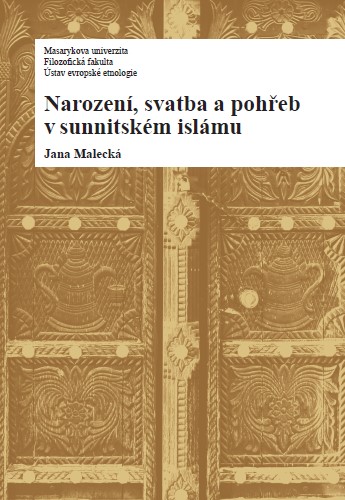
The publication deals with Sunni Muslim traditions connected with birth, wedding, and funeral. It focuses on Syria, Jordan, Israel, Palestine, and the Czech Republic. It describes traditions of Sunni Muslims living in mentioned Arab countries along with traditions of the Syrians, Jordanians, Palestinians living in the Czech Republic, and Czech converts as well. Selected traditions of these two different cultures (Arab Muslims and Czech Muslims) are compared so we can note the differences and similarities between their bearers who are living in various cultural and religious areas.
More...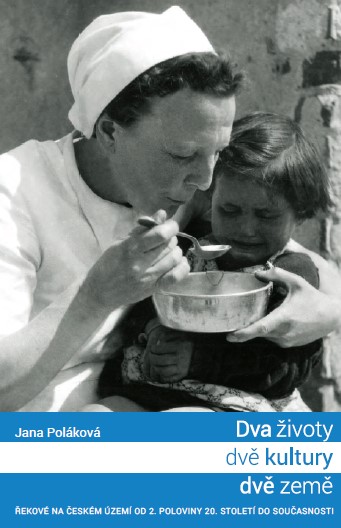
The book is part of a long term project of the Hellenika Foundation Brno Greeks on Czech territory since the mid-20th century in the implementation of which the Ethnographic Institute of the Moravian Museum has been participating on professional basis. The main goal of the project was to present, on the occasion of its 70th anniversary, the first big immigration wave of Greek refugees on the territory of the then Czechoslovakia. The foundation started preparing worthy celebrations as soon as in 2017 with interviewing 19 selected respondents in the average duration of 45 minutes resulting in separate video and audio records. This research became then a stepping stone of activities in following several years. The first output was the exhibition Two lives, two cultures, two countries. Greeks on Czech territory since the mid-20th century. The public could learn about the arrival of Greeks on Czechoslovak soil in consequence of the civil war, about their gradual integration as well as preservation of their specific culture. During the exhibition opening in November 2018 a documentary with the same title was shown that had come into being through the combination of extracts from interviews, period shots and examples of archive materials of various kinds. In the following year the film was presented at the festival of museum movies Musaionfilm in Comenius Museum in Uherský Brod. It was awarded the main prize „Černý Janek“ for an innovative treatment of the fortunes of the Greek minority in this country. In 2019 a travelling version of the exhibition was created available today to educational and memory institutions throughout the country. In the same year the transcription of the recorded interviews into a written form was carried out. Their publication, analysis and interpretation complemented with a brief survey of the past and present are the core of this book.
More...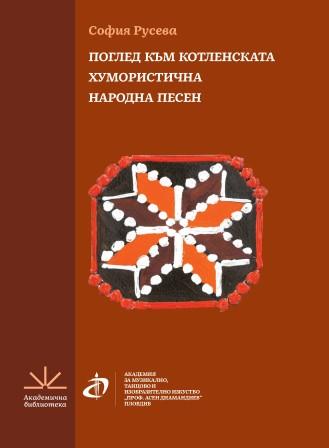
The book "Looking at Kotlen's Humorous Folk Song" is a monographic study that traces the characteristics of Kotlen's humorous folk songs - an understudied category of songs, largely spread only in Kotlensko. The song material, the object of the present study, amounts to a total of 58 songs and is the result of various sources - field materials recorded in the period 2001-2010, audio and video recordings, as well as the collections "From the source song flows /authentic Kotlen folk songs/ ", Part I (1993), "Folk Songs from Thrace" (2013) and "Bulgarians - 672 Unpublished Folk Songs from the Kosta Kolev Archive" (2018). The subject of research in the main part of the exhibition are the peculiarities of humorous chants in relation to their functional, metrorhythmic, poetic, form-forming, structural and ladomelodic specificities. The goal is an attempt to clarify the overall appearance of the chants and, if possible, to bring out common features characteristic of humorous song samples. To achieve the objectives of the study, the following research methods were used: observation, interview, description, analysis, synthesis and comparison.
More...